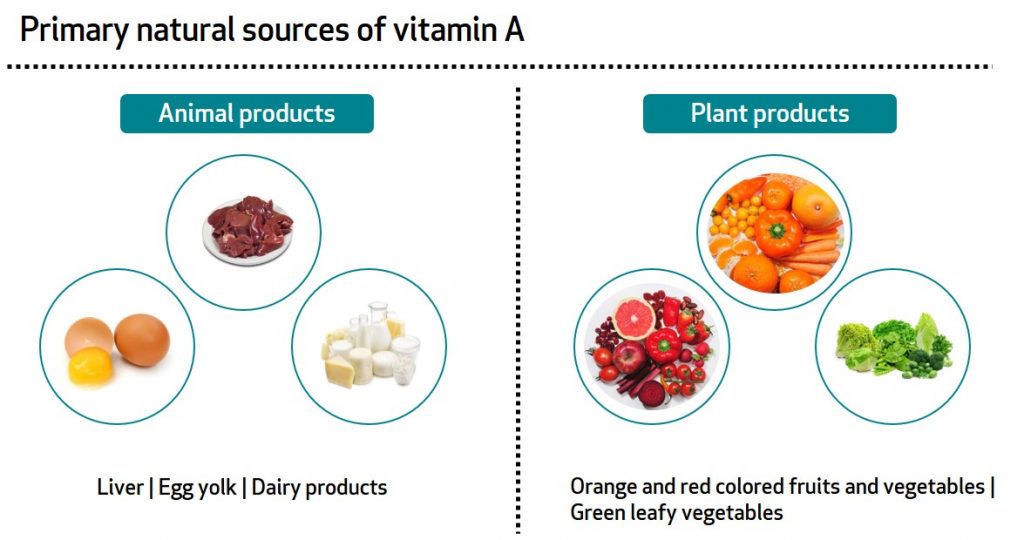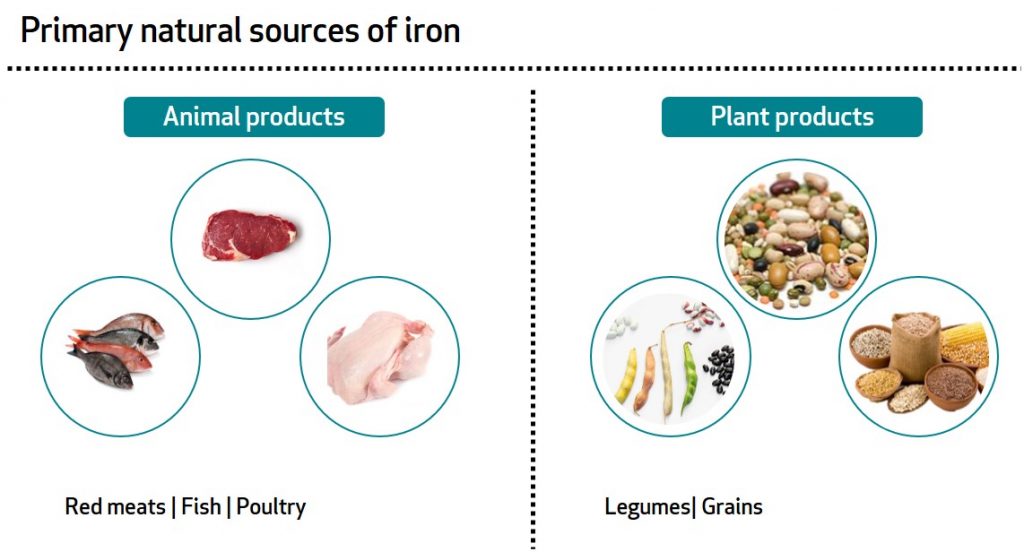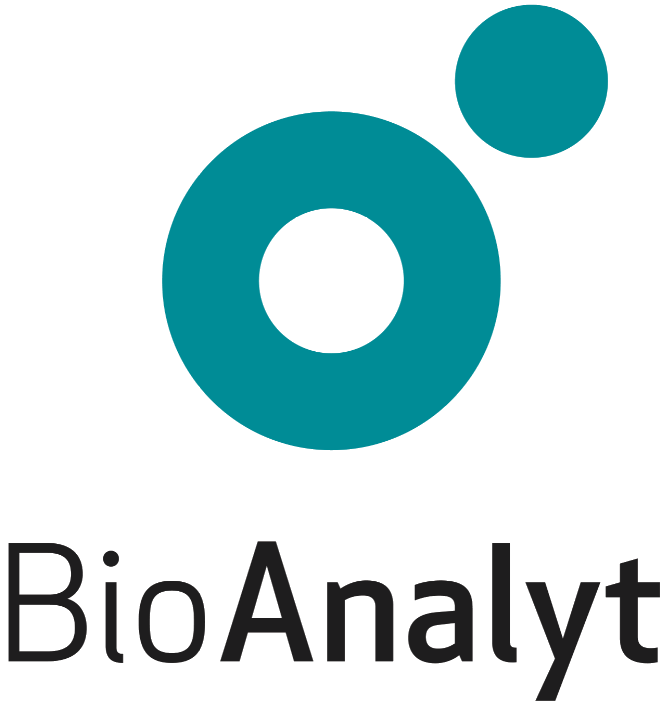
Primary natural animal and plant sources of vitamin A
February 2020
We continue with our “Learn About Your Vitamins and Minerals” series by putting the spotlight on vitamin A and iron. Let’s dig in by first talking about vitamin A!
Vitamin A is a group name of fat-soluble vitamins which are vital for reproduction, vision, immune function, genetic activities, skin health, and cell growth. Animal food sources of vitamin A are mainly in the form of retinol which is easily digested and absorbed by the human body. Plant sources of vitamin A on the other hand are in the form of carotenoids (e.g., ß-carotene, α-carotene, astaxanthin, ß-cryptoxanthin, etc.) which are converted into vitamin A in the body. About 90% of vitamin A is stored in the liver.
Primary animal sources of vitamin A include liver, egg yolk, butter, whole milk, and cheese. Major plant sources of vitamin A, in the form of carotenoids, include orange-colored fruits and vegetables (e.g. carrots, orange-flesh sweet potatoes, melon, mangoes, and oranges), green leafy vegetables (e.g., spinach, lettuce, and broccoli), and red palm oil. Regardless of the source of vitamin A, consuming vitamin A with other sources of dietary fat (e.g. meats, oils, and dairy products) enhances the absorption of vitamin A in the body.
Vitamin A deficiency can be a major problem when diets primarily consist of starchy staple foods or when the consumption of deeply colored fruits and vegetables, animal-source foods, or vitamin A fortified foods is low. The highest risk of deficiency is seen among preterm infants, infants and children, pregnant and lactating women, and individuals with conditions such as fat malabsorption, liver disorders, or genetic conditions like cystic fibrosis. Major deficiencies of vitamin A in the human body may result in night blindness (xerophthalmia), delayed growth, decreased immunity to infections, poor wound healing, infertility and problems conceiving, and dry skin. Vitamin A deficiencies are prevented by consuming diets which are rich sources of vitamin A, and by vitamin A supplementation during key life periods. Food fortification of staple foods like flours, oils, and bouillon cubes with vitamin A can also help improve vitamin A status in populations.
iChecks can help you to measure the levels of vitamin A in a wide variety of foods, more inexpensively and more quickly than traditional laboratory methods. iCheck Chroma can measure vitamin A levels in edible oils, such as those which may be fortified. iCheck Fluoro can measure vitamin A levels in many foods as well as biological samples, including micronutrient premix for fortification, milk and milk powder, flours, sugar, bouillon powder, breast milk, liver samples, whole blood, and blood serum. iCheck Carotene can measure total carotenoids in a variety of foods and biological samples as well, including root vegetables, fruit juices, eggs, salmon, whole blood, and blood serum.

Primary natural animal and plant sources of iron
Iron is an important mineral in the diet responsible for the transportation of oxygen by hemoglobin in the blood. Iron helps the body to make hemoglobin (Hb) which is a protein found in the red blood cells that carries oxygen in the body and gives blood its red color. Iron levels and needs vary from person to person, and the requirements change throughout an individual’s life course. Iron needs increase during menstruation, pregnancy, and periods of rapid growth such as early childhood and adolescence.
Dietary sources of iron occur in two forms, namely heme and non-heme iron. The primary sources of heme iron are red meat, poultry, eggs, and fish. Non-heme iron is obtained from cereal grains, pulses, legumes, fruits, and vegetables. Heme iron is highly bioavailable and dietary factors have little effect on its absorption. Non-heme iron absorption has a lower bioavailability, and its bioavailability is strongly influenced by the presence of other food components. Factors that inhibit non-heme iron absorption include phytates (found in grains), polyphenols (found in teas and red wine), vegetable protein, and calcium (which also affects the absorption of heme iron). Food processing techniques to reduce the phytate content of plant-based foods, such as thermal processing, milling, soaking, fermentation, and germination, improve the bioavailability of iron from these foods.
Dietary iron is stored in the liver, spleen, and bone marrow of the human body. A lack of iron depletes the stores in these organs leading to iron deficiencies. The most significant and common iron deficiency is iron deficiency anemia. Anemia describes the condition in which the number of red blood cells in the blood is low, or the blood cells have less than the normal amount of hemoglobin. Physical signs of iron deficiency include fatigue, weakness, headaches, apathy, susceptibility to infections, and poor resistance to cold temperatures. Anemia during pregnancy can contribute to the risk of premature birth and maternal mortality.
iCheck Iron can also help you to measure the levels of iron in a wide variety of foods, including micronutrient premix for fortification, flours, soy and fish sauces, blended flours (e.g. corn soy blend), and lipid-based nutrient supplements (e.g. ready-to-use therapeutic foods such as the branded Plumpy’Nut®).
Because of the significant effect anemia and iron deficiency can have on the body and its high prevalence globally, BioAnalyt is also working on a new diagnostic product, iCheck Anemia, which will help to diagnose anemia and determine its causes and the contribution of iron deficiency. We are hoping this new product will help make this component of nutrition visible and provide more accurate diagnosis and more effective treatment plans to individuals throughout the world suffering from anemia.
For more information about vitamin A and iron, consult the publication “Vitamins and Minerals: A Brief Guide“ by Sight and Life. Next in this series, we discuss Vitamin D and Calcium.
